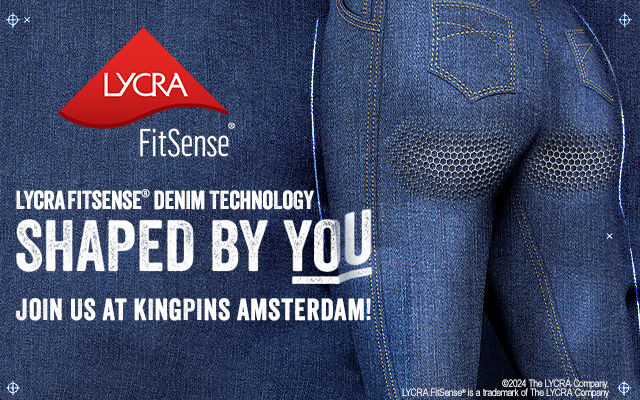Fashion is enigmatic in evolution, intriguing in comprehension, and has always been receptive of out-of-box ideas. Since it can inspire its followers to reveal their true selves, it is truly liberating as well. For long, we have been accustomed to gender-based fashion – separate attire for males and females, that has not only created distinct and segmented binary fashion in our mind but also stereotyped it. For instance, when we think women, we want to see them wearing skirts, dresses and heels, and when we see men, they should be in suits, trousers, flat shoes etc. What if we could blur or even erase these gender classes and instead unify the fashion into non-binary or unisex or gender-less or gender-neutral or gender-fluid or simply fluid fashion? Terms can be many and settling on one is secondary, what is more important is the impact this aspiration is casting on global fashion. Going by market reports, the fluid fashion is for real and creating waves.
Background
Every trend in fashion is up for debate, so is fluid fashion. Enthusiasts call it a new phenomenon while critics disagree, for whom it is just another vintage revival. They argue that unisex fashion can be traced back to the times of European Renaissance (around 14th century) when clothing attire used to express social status. Take the case of upper noble class of the society, wherein both genders wore largely similar clothes such as lace collars, gold-embroidered capes etc. Even children, whether male or female, used to wear luxuriant fur or haired dresses. When Europeans switched to imperialism and colonised most parts of our planet, they came across various cultures having binary clothing norms. For them, these norms were non-conforming hence primitive and uncivilised and must be eradicated.
Somehow, the primitiveness prevailed, and centuries later binary fashion became humungous and dominating. It ended up creating its own empire and rules. During the 19th and 20th centuries, many professional and social classes were born, and fashion began getting more segmented. In America of the 1950s and 60s, while the economic boom brought in formal business look with men wearing stylish suits and women adorning fancy dresses, the social movements made the fashion more vibrant – colourful, bold and expressive. By the last decade of the 20th century, fashion turned more casual and comfortable as was seen in loose cargos, baggy pants, low rise jeans and wide tops. The binary fashion continued unabated and with expanding consumerism it made more sense staying that way.
What Changed it All
With the turn of the millennium, social norms underwent major changes, with growing acceptance of gender neutrality being one of them. This paved way for genderless clothing, for which the growing demand got further fuelled by increased recognition of diverse gender identities. The recognition not only challenged traditional norms but also led to significant transformation in fashion design, marketing and consumption. The fluid fashion that emerged under these circumstances now challenges binary fashion as the styles designed in it, including even fashion accessories, can suit all genders. With growing awareness of sexuality, identity and freedom there is a greater acceptance of fluid fashion. Thus, it is not just a passing trend but a revolutionary one that even forced the British Fashion Council to announce in 2021 that the London Fashion Week would no longer have any separate segmentation of menswear and womenswear. The impact is now visible in other fashion weeks too, where gender-neutral fashion is being showcased in catwalks.
Subtle Signals
Over the last few decades, unisex collections have already been representing gender-fluid fashion in subtle form. As the social and fashion dynamics changed and fluid fashion showed increased acceptance, the unisex segment started coming of age. Fashion designers and brands are blurring the gender lines by creating unisex collections – garments with relaxed silhouettes, minimalistic styles and neutral colour palettes. The emphasis has been on creating fashion that can be worn by anyone irrespective of the gender. Brands like Adidas and Nordstrom offer unisex collections such as the most recent Lizzo’s Yitty – a gender-affirming shapewear, which was announced in March and launched this summer. Even in India, Being Human launched a peculiar collection ‘Blur’ catering to unisex segment. This shows how some fashion brands are giving importance to unisex clothing and emerging more adaptive to penetrating into the ideology of fluid fashion and its demands.
In addition to clothing, footwear too has been signalling the trend. More than a century ago, the old-fashioned Chuck Taylor All Star canvas shoe was supposedly the most inclusive shoe ever made. As of 2023, the owner of Converse Nike announced its Sabrina Ionescu unisex line for all hoopers. The line is gender-less performance and lifestyle assortment of merchandise and named after an American professional basketball player for the New York Liberty team of the Women’s National Basketball Association (WNBA). Similarly, Vans brand has been selling same type of shoes to consumers even before gender-neutral fashion came in vogue.
Fashion giant Levis is positioning its brand for everyone. Three years ago, the company had launched ‘Unlabeled’ in collaboration with representatives from the LGBTQIA community. The Unlabeled is a gender-neutral collection which includes wide leg jeans, jackets and a matte colour spectrum, that inspired many brands to pursue similar concepts in the form of multiple collections.
Gen Z – The Mainstay
Gender neutrality, however, can put fashion retailers in a state of conundrum. Regardless of their personal stand on non-binary fashion, they may face push-back for dealing as well as not dealing in genderless fashion from certain class of consumers, reflecting the conflicting social mindset at large. It is here that Gen Z consumers play a crucial role. The confounded retailers of gender-neutral fashion need to realise the fact that Gen Z believes in standing up for the rights of others, regardless of their own self-described gender. A large part of them believes in an all-inclusive society and feel constrained if forced to live in a box with clear lines of separation – race, gender or ethnicity wise. They are focused on driving cultural change, social justice and parity for all. This makes Gen Z the mainstay of fluid fashion growth in the coming years – even surveys show that.
In a September 2022 survey of US consumers, it was found that younger generations – 85 per cent of Gen Z and 75 per cent of Millennials, are most likely to buy more gender-neutral fashion (apparel). A similar finding was reported by a TOBE (one of the world’s most prestigious fashion merchandising consulting companies) report which said that Gen Z is thinking beyond binary fashion for a gender-fluid approach to life. In another survey by UNiDAYS (England-based free shopping app for students), 80 per cent Gen Z respondents claim to focus on how clothes should look and feel, 55 per cent do not mind how they are labelled, and 65 per cent feel brands should give shoppers the option to search for gender-neutral clothing. The fashion brand Phluid Project also says 56 per cent of Gen Z consumers shop outside their assigned gender. Yet another research by Klarna – a Swedish fintech company that provides payment solution services, found that 70 per cent consumers are interested in buying gender-fluid fashion in the future.
|
Some designers and brands in fluid fashion space | |
|
Rad Hourani |
Canadian designer brand is known for its unisex and gender-less designs that have clean lines, minimalistic aesthetics and versatile silhouettes for any gender. In addition to being genderless, the designer’s website displays his creations as raceless, ageless, nationless and limitless. |
|
Telfar Clemens |
US-based Telfar Clemens is a brand of gender-neutral designs with motto – “It is not for you, it is for everyone”. The Liberian-American fashion designer’s collection includes ready-to-wear apparel, gorgeous handbags and accessories that are less about gender and more about designer’s signature bearing instantly recognisable style. |
|
Alejandro Gomez Palomo |
The Spanish brand of ethereal and romantic designs, demonstrates the collection that blurs the gender-separating lines and offers gender-fluid aesthetics. |
|
Rob Smith |
The American designer, popularly known for Phluid Project retail brand, offers wide range of gender-neutral clothing, accessories and beauty products. |
|
Charles Jeffery |
The designer from Scotland is the founder of Loverboy, the collection that offers vibrant and expressive designs, incorporating a fluid and inclusive approach to fashion. |
|
JACQ |
Founded by Taiwan-born and Singapore-raised Jackie Yang, JACQ’s fluid fashion ranges from jumpsuits to pullovers, blazers, trousers and tees. |
|
Eckhaus Latta |
The American fashion brand by designer Zoe Latta and her husband Mike Eckhaus offers clothes, primarily unisex, created through experimentation with different textures, details and colours ranging everything from ready-to-wear to outerwear and accessories. |
|
Sarah Bijoux |
The Montreal-based gender-neutral accessories brand, founded by jeweller Sarah Simard in 2018, offers handmade and minimalist designs that are sustainable too. The designs are made with philosophy to offer shoppers pieces that are as ethical as they are accessible and timeless. |
|
Senna Case |
Senna Case is unique in the sense that it offers adult-matching-kids collection, consisting of pieces for the whole family – sweats and sweatpants in vivid colours, for instance. The collections, made in cozy and sustainable materials, come in drops ensuring that gender neutral need not be colourless. |
|
Bode |
Founded in 2016 by Emily Adams Bode Aujla, Bode is a luxury menswear label that is meant to be unisex as it marries masculinity with femininity owing to its oversized collection, which include everything from leather espadrilles to purple wool suits, and crocheted cardigans to tuxedos made of either vintage fabrics or replications. Besides having boutiques in Los Angeles (LA) and New York, the label is available with retailers like Ssense and Bergdorf Goodman. |
|
Big Bud Press |
Made in California, Big Bud is based in LA and is a brand that is gender-fluid and size inclusive. The sizes are classified by length – petite, regular and long, as well as size – XXS to 6XL. With 98 per cent of the domestically grown and NAFTA-certified fabric, the clothing label specialises in everyday goods that are unisex. Its offerings include baby tees, turtlenecks and polos in tops, and jumpsuits in an array of cuts, styles, and accessories. |
|
Ijji |
Founded in 2016, another of LA-based genderless clothing labels, Ijji has Japanese name meaning loose-fitting (XXS-XXL) drawstring pant. The brand offers comfortable and casual staples, clothes that are also timeless, constructed with natural fibres. The brand’s shopping site displays only four colour shades – black, natural, indigo and blue, across two fabrics – canvas and denim. |
|
TomboyX |
Seattle-based TomboyX was founded in 2013 by Fran Dunaway, a media-executive-turned-entrepreneur, and Naomi Gonzalez, his wife. The B Corp-certified brand provides accessible and sustainable gender and size inclusive clothing, undergarments in particular, with sizes ranging from XS to 4X. Its other offerings include apparel, swim and active wear. |
|
Lonely Kids Club |
The Australian gender-neutral clothing brand was founded in early 2011 by a boy called Warwick. Dealing in slow fashion, Lonely Kids Club – the online hub of gender-neutral graphic styles, is not into mass production and sweatshop rather believes in personal clothing so much so that founder himself prints every T-shirt personally. |
|
I and Me |
Jessica Gebhart founded I and Me in 2015 that uses sustainable manufacturing practices, focusing on fabrication, function and form. The denim and lifestyle brand from London does not divide its clothing pieces by gender. All collections are carefully sourced from mills and eco-friendly manufacturers, and are developed into fashionably functional merchandise for the androgynous community. |
|
Zero Waste Daniel |
Daniel Silverstein founded ZWD in 2015 inspired by zero-waste lifestyle. Today, the genderless fashion label serves unique styles created from unique materials collected from consumer waste in New York city’s garment industry and other hard-to-recycle materials that would otherwise reach landfills. Daniel reuses these materials to manufacture exquisite gender-neutral clothing. |
|
Wildfang |
Co-founded in 2012 by Emma Mcilroy, Taralyn Thuot and Julia Parsley and presently headquartered in Portland (Oregon), Wildfang offers double-breasted blazers, overalls, coveralls, smart vests, graphic tees etc. Brands commitment to gender causes is not confined to creating fluid fashion alone but encompasses philanthropic work as well. Wildfang has given back over $500K to organisations like Q Center – the largest LGBTQ community centre in the Pacific Northwest, and the Tegan & Sara Foundation – an organisation working to improve lives of LGBTQ women and girls. |
|
Human Nation |
Coming from The House of LR&C, Human Nation was founded by Russel Wilson, Ciara and Christine Day. Besides emphasising on racial and size inclusivity the brand also puts an emphasis on androgynous offerings that include T-shirts, hoodies, shorts and joggers. With every purchase, The House of LR&C donates 3 per cent of proceeds to Wilson and Ciara-founded ‘Why Not You’ – a non-profit organisation, that supports children in their formative years, helping them to fight poverty, get educated and stay healthy. |
Social Media and Influencers
In the age of internet, nothing can match the marketing potency and influence of social media whether in launching new trends, accessing new markets, creating fan base or leveraging fashion revolutions. Particularly in case of fluid fashion, social platforms like Instagram, Facebook and TikTok have emerged as the powerful tools that not only showcase fashion but also connect with customers effectively. These platforms coupled with Gen Z base, social media influencers and content creators are shaping and promoting the idea of inclusivity, furthering the cause of gender-neutral fashion. Their efficacy has made retailers sit and pay attention to the need of gender-fluid segment. As the social media proves to be an apt platform for individuals to express their unique preferences, gender-fluid fashion is gaining traction among diverse audience. The social media has empowered consumers to voice their opinions and demand what they deem as trend in fashion. Consequently, the fashion fraternity is compelled to listen to their voice and adapt to the growing demand of fluid fashion. This has driven influencers and content creators to play to the gallery and champion for the inclusivity in fashion to gain extensive followers. By endorsing gender-neutral fashion, they are not only influencing consumer perceptions but adding to its popularity as well.
Influencers such as Harry Styles, Billie Eilish, Billy Porter, Ranveer Singh, and other artists and celebrities are demonstrating their inclination towards gender-fluid fashion. They wear styles that define who they are and what they believe in. For instance, The English singer and Grammy award winner of 2022, Harry Styles has become a fashion icon who has been breaking the boundaries of gender roles. Gracing the solo cover of a man on US Vogue in 128 years, Harry appeared on the cover in December 2020 in a dress and created waves on social media. On the other side is the American Rapper A$AP Rocky whose outfits and aesthetics make him a trendsetter for streetwear. Showing his fluid fashion inclination, he is often seen wearing beaded necklaces, skirts, and flaunting handbags and painted fingernails. Similarly, there are many more fashion influencers and activists who are advocating for fluid fashion and free self-expression through their unconventional outfits.
Fluid Fashion Trends
The fluid fashion has some remarkable identities and distinct expressions which act as its stark differentiators from binary fashion. It is often found to work around androgynous and minimalist aesthetics. Largely, it focuses on versatile silhouettes and adaptable cuts. Among the popular outfits seen in this segment are loose and oversized clothing items, represented by boxy shirts, wide legged trousers and oversized blazers and so on, that allow ample comfort and ease of movement. Since the collection is required to be inclusive blurring the lines between men’s and women’s fashion, they may include tailored suits with feminine detailing, flowing tunics and unisex jumpsuits. Inspired by pandemic-induced increased demand for casual wear, athleisure and streetwear items like hoodies, joggers, sweatpants, oversized tees, sneakers and track pants also form a considerable part of gender-fluid styles. With respect to colours, fluid fashion is more skewed towards the range of shades that are not strongly associated with any specific gender. Overall, earthy tones such as beige, camel, khaki and olive work great, while monochromatic colours like black, white and grey are also accepted widely. This raises a valid question – why does gender-fluid fashion need to be dull and not accommodate bright colours depicting some fun? The ‘neutral’ in gender-neutral should not be taken literally. To address such concerns, and to add touch of vibrancy to these otherwise understated colour palettes, soft pastels, muted tones and subtle pops of dusty pink, lavender, sage green etc are also incorporated.
Based on an analysis by platform Stylight and fashion magazine Vogue, the German fashion brand Nuuwai predicted gender-fluid trends for 2023 which particularly focuses on product categories such as skirts, blazers, accessories, handbags and jewellery which exhibit convenience of wearability across genders.
Sizing it Right
When genderless fashion claims to fit all, it is required to develop size range that justifies this claim too. Since this fashion no more requires gender-specific sizes it becomes really challenging to produce common sizes which can accommodate both male and female body shapes. This compels a case for brands to create common sizes across a graded scale. For example, Everlane had to come up with five prototypes and more than 50 fit models of different sizes to develop a “fits-everyone” denim line that it launched as genderless. This helped company produce its own “The Everlane” sizing scale, ranging from E1 to E11. In this, size E1 is equivalent to men’s size 26 and women’s size 24 while E2 incorporates men’s size 27 and women’s size 25, and so on, sizes graduate on the scale. The challenge does not end at creating common sizes. The brands and retailers also need to train sales associates on new sizing standards across online and offline channels, as well as educate shoppers. This enables the associates to help shoppers in locating the right size based on new standards. In addition, the new sizes must also appeal to the target markets. At times, sizes could mismatch or are in complete disarray when shoppers compare them to sizes of other brands: E3 of Everlane could be same as small size in US Uniqlo and medium in Japan. This means fluid fashion will always lack size compatibility until the segment devises a universal sizing standard.
Hidden Benefits
Fluid fashion has some hidden benefits too, that include yielding a higher profitability and help developing an eco-friendly ecosystem of fashion. The common sizes across genders in fluid fashion cut down obsolete sizes reducing the depth in size set. Also, when the single attire fits all in gender-fluid fashion, there are fewer styles required to be produced representing slow fashion unlike mass production of numerous styles in fast fashion to cater to multitude of consumer segments. The instant outcome of reduced styles and size sets is the need for less merchandise which, in turn, requires smaller store spaces and designs driven by a unified VM (visual merchandising) strategy. While fewer styles also mean matching the right trend resulting in increased conversion and thereby higher sales, the reduction in size range means reduced production costs yielding higher profits. The combined result is reduction in over-production of fashion, adding to the benefits of environment.
Way Forward
When UK retailer John Lewis announced in 2017 that it would stop gender-labelling its children’s garments hardly anyone knew that by 2023 there would be numerous media pieces doing rounds worldwide, talking in awe about fluid fashion. Society has come far off since then and is accepting and understanding the ever-expanding spectrum of gender identities. Despite acceptance and expansion, many brands are still passing oversized, shapeless and overdone pieces as gender-neutral offering. This indicates a long road ahead for fluidity in fashion though a beginning has been made. Clear messaging for gender-fluid fashion is the need of the hour. The appealing marketing programmes directed at target markets need to develop a new customer cohort for the segment.
Another innovative idea in this direction would be to cast non-binary models in gender-fluid campaigns to make a deeper connect with the audience. Unless the industry normalises gender non-conformity and allows more space for experimentation, fluid fashion will continue making irregular splashes in the global fashion.





20240924091633.png)
_Big.jpg)






Comments